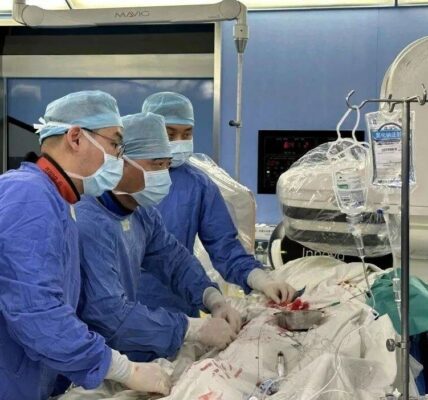To mitigate the rising incidence of anaemia in children, The National Centre of Excellence and Advanced Research on Anaemia Control (NCEAR-A), AIIMS, New Delhi has recently organised a full-day meeting on ‘C2IQ’ for Control of Anaemia in Children (0-19 years): A Time for Action – “Coverage, Continuity, Intensity and Quality”, to understand the issues in the management and control of the high burden of anaemia among children and adolescents in the country.
The other organising partners were – the Paediatric and Adolescent Nutrition (PAN) Society, the Indian Association for Adolescent Health (IAAH), the Indian Academy of Paediatrics (IAP), the Indian Public Health Association (IPHA) and UNICEF, India. The NCEAR-A is a technical support unit established by the Government of India as part of Anaemia Mukt Bharat (AMB) at the Centre for Community Medicine (CCM), AIIMS, New Delhi.
Control of Anaemia in children event organised at AIIMS saw a galaxy of public health experts such as Prof. M. Srinivas, Director, AIIMS, New Delhi, Prof. Vinod K. Paul, Member, NITI Aayog, Padma Shri Dr Chandrakant S. Pandav, Professor and Former Head, CCM, AIIMS, Delhi and Prof. N. K. Arora, Executive Director, INCLEN chaired the scientific discussion sessions. Other dignitaries were Dr Rajiv Bahl, DG, ICMR who addressed the meeting as a distinguished guest, and Prof Jagdish Chandra, ESI Medical College, New Delhi deliberated on nutritional anaemia among children and adolescents as a keynote address.
Anaemia in children affects their physical growth as well as mental development. According to the National Family Health Survey (NFHS-5), 67% of under-five children and 59% of adolescent girls and 31% of adolescent boys are anaemic.
The participating experts unanimously endorsed the public health significance of the high burden of anaemia in the country. The consultation was attended by more than 150 delegates from across India and had senior policymakers, academicians and program implementers as participants. They acknowledged that control of anaemia in children will be critical to India’s march towards Viksit Bharat Abhiyan @2047.
| Call to Action for Anaemia Control of in Children & Women Endorsed by IAP, IPHA & IAAH 1) Recognise anaemia in children as a significant public health problem, which has to be addressed to achieve the overall development of the nation. 2) Training of master trainers on anaemia in children using training modules and e-modules similar to AMB ToT tool kit, and also using cascade model to train trainers from national to state to district and block level. 3) Point-of-Care testing of anaemia under AMB for under-five, pre-school and school-going age children using digital hemoglobinometers. Currently, AMB has provision for anaemia POCT screening only for the adolescent age group and the same be extended to all children 0 to 19 years of age. 4) Strengthening of Rashtriya Bal Swasthya Karyakram (RBSK) and Rashtriya Kishor Swasthya Karyakram (RKSK), Pradhan Mantri Poshan Shakti Nirman (PM POSHAN), Integrated Child Development Services (ICDS) Schemes with special focus on addressing anaemia. 5) Special focus on children in private schools and also out-of-school children both for government-supported programs for anaemia control. 6) Intensifying focus on dietary approaches to control anaemia in children with a food system enabling environment policy and programs. 7) Upgrading all health facilities to ‘Child Friendly’ Hospital along the lines of ‘Baby Friendly Hospital Initiatives’ and consider universal screening for anaemia in all health facilities. 8) Extending school feeding programs from primary and middle school to higher secondary and senior secondary levels, and also extending it to private schools. 9) Addressing anaemia among children in mission mode (on the lines of Pradhan Mantri Surakshit Matritva Abhiyan (PMSMA) by organizing an anaemia day every month on a fixed day, involving all medical practitioners and paediatricians including private practitioners. 10) Establishing an Anaemia Alliance for children at the national and state level to ensure coordination amongst all stakeholders including academia, state and national government agencies, civil society, development partners and the private sector and advocate for anaemia control in mission mode. |






